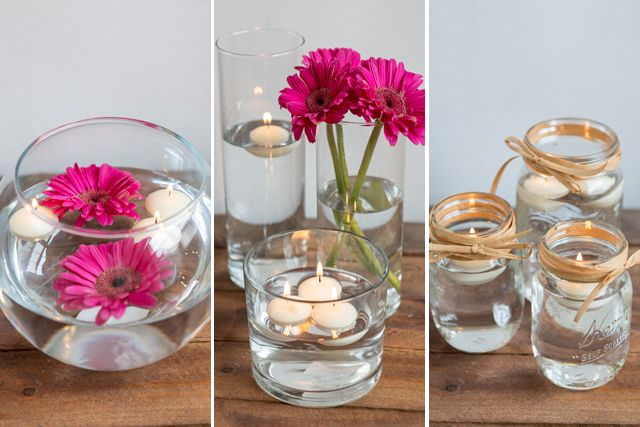What Do The Candles On The Advent Calendar Mean?
Advent is a season observed in many Christian churches as a time of expectant waiting and preparation for both the celebration of the Nativity of Jesus at Christmas and the return of Jesus at the Second Coming. The term is a version of the Latin word meaning “coming”.
The season of Advent originated in the 4th century as a time of preparation for Epiphany, which celebrates the visit of the Magi to the Christ child on January 6. By the 6th century, Roman Christians had tied Advent to the coming of Christ. The season was considered a preparation period for Christ’s “second coming” at the end of time as well as the annual celebration of his birth.
Over time, the Advent season was shortened to the four Sundays before Christmas and was observed with fasting during daylight hours. Today, Advent traditions vary around the world but commonly include lighting candles on an Advent wreath, attending church services, keeping an Advent calendar, and erecting cribs or Nativity scenes. The traditions look forward to celebrating the birth of Jesus while awaiting the second coming at the end of the liturgical year.
Advent Wreath
The Advent wreath is a circular decoration made of evergreen branches into which four candles are inserted. It has became a common Christmas tradition and is used by many Christian denominations as part of their Advent season preparations for Christmas.
The use of the wreath and candles during the Advent season is thought to have originated among German Lutherans sometime in the 16th century, though some sources also mention origins in Scandinavia. The circular shape of the wreath represents eternity and the unending cycle of the year, while the evergreen branches symbolize the promise of new life. The four candles typically represent the four weeks of Advent, with a new candle being lit each Sunday leading up to Christmas.
The circular shape and evergreen branches echo ancient pagan midwinter rituals that used wreaths and fires to symbolize the return of the sun’s light and longer days. Early Christians adapted these existing traditions, using the wreath’s symbolism to point towards Christ as the light of the world. The Advent wreath helped Christians spiritually prepare for and anticipate this coming of Christ and the promise of salvation.
Advent Candles
The Advent wreath traditionally contains 4 candles which are lit on each of the 4 Sundays leading up to Christmas. Each candle has a special meaning that represents an important virtue or theme related to the Christmas season.
The first candle, which is purple, symbolizes hope. It is lit on the first Sunday of Advent. This candle reminds Christians of the hope they have in Christ.
The second candle, also purple, represents peace. It is lit on the second Sunday of Advent. This candle represents the peace that Jesus’ birth brought to earth.
The third candle is pink and symbolizes joy. It is lit on the third Sunday of Advent, which is Gaudete Sunday. The pink color represents the joyful anticipation of the coming of Jesus.
The fourth candle is purple and represents love. It is lit on the fourth Sunday of Advent. This candle reminds Christians of God’s love for the world in sending his only Son.
First Candle
The first candle lit on the Advent wreath is known as the Prophecy Candle or the Hope Candle. It is purple in color, representing penitence and royalty. This candle is lit on the first Sunday of Advent, which falls between November 27th and December 3rd each year.
The purple color symbolizes penance and repentance as we prepare our hearts for the coming of Christ. As the first candle, it represents the expectation and hope we have in Christ’s first coming into the world. The prophets of the Old Testament waited in hope for the Messiah’s arrival, and lighting this candle reminds us to be watchful and ready to receive God’s promises.
Second Candle
The second candle on the Advent wreath represents faith. This is usually a purple candle and is lit on the second Sunday of Advent. The color purple represents royalty and the coming of Christ the King. Lighting the second candle symbolizes the faith we have as we await the birth of Jesus. Just as the ancient prophets had faith in God’s promise of a savior, we too have faith as we look forward to celebrating Christ’s birth.
The second Sunday of Advent also marks the halfway point as we count down the four weeks until Christmas. Lighting this candle reminds us to have faith and trust in God’s plan of salvation as we prepare our hearts to receive the Christ child.
Third Candle
The third candle is often known as the Shepherd’s Candle and represents joy. It is typically colored pink to symbolize the joy that the shepherds felt when the angel appeared announcing Christ’s birth. The third candle is lit on the third Sunday of Advent, also called Gaudete Sunday. Gaudete means “rejoice” in Latin. Lighting the pink candle on Gaudete Sunday provides a break to the penitential season of Advent and reminds us to rejoice because our Savior’s birth is drawing near.
The pink candle represents the joy and excitement building up to Christmas day. Just as the shepherds rejoiced when they heard of Jesus’ birth in Bethlehem, the pink candle brings us joy as we anticipate the Nativity. The shepherds were the first people to spread the Good News of Christ’s birth, reminding us to share our joy with others during this season.
Fourth Candle
The fourth candle is traditionally purple and is lit on the fourth Sunday of Advent. This candle is called the Advent candle or the candle of love. The purple color symbolizes preparation and penitence as the final preparations are being made before the coming of Christ. This also corresponds to the virtue of love. Love is central to the meaning of Christmas, as Christians believe God’s love was shown through the gift of his son, Jesus. The fourth Sunday of Advent marks the final days before Christmas, so lighting this candle reminds us to open our hearts to receive and share God’s unconditional love.
Christ Candle
The Christ Candle, often called the white candle, sits in the center of the Advent wreath. It represents Jesus Christ, the light of the world. The Christ Candle is lit on Christmas Eve or Christmas Day. The color white symbolizes purity and light. While the other Advent candles symbolize hope, love, joy and peace, the Christ candle represents the coming of Jesus on Christmas Day to fulfill all those promises. The white color reminds Christians that Jesus was sinless. Lighting the Christ Candle celebrates Jesus’ birth and looks forward to his return.
The Christ candle is first lit on either Christmas Eve or Christmas Day. Christmas Eve services often include all the Advent candles being lit before the Christ Candle is lit. The lighting of the Christ Candle represents Jesus coming into the world to bring light and salvation. For Christians, it honors the fulfillment of the ancient prophecies about the Messiah’s birth.
Some traditions only light the Christ Candle on Christmas Day at Christmastime services or meals. Lighting it signifies Christ has come into the world and the Advent season of expectation is over. The lit Christ Candle remains in the Advent wreath throughout the Christmas season as a symbol that Jesus is now present with His people.
Other Candle Traditions
In addition to the four candles traditionally used on the Advent wreath, some families incorporate other candle traditions into their Advent observances.
Individual candles can be lit to represent each member of the family. Often, these candles are placed in decorative holders and are lit at dinnertime or during family devotions. Using individual candles allows each person to have their own special role in the Advent celebration.
There are many types of candles that can be used during Advent. Beeswax candles are popular for their brightness, slow steady burn, and natural scent. Soy candles are also frequently used for their eco-friendly qualities. Scented candles like cinnamon, pine, or frankincense are another option that can fill the home with festive fragrances.
No matter what type of candles are used, lighting them marks the passage of time during the weeks leading up to Christmas and fills this season with warmth and beauty.
Significance Today
Advent is now widely celebrated by Christians all over the world. It marks the beginning of the church year and is an important part of the Christian liturgical calendar. The Advent season continues to grow in popularity and importance.
Many churches display Advent wreaths and host special Advent services. Church services often include Advent hymns and readings that relate to the coming of Christ. The lighting of the Advent wreath candles has become a popular weekly ritual during the four weeks leading up to Christmas. Children’s programs and pageants are common at many churches during this season.
Beyond church celebrations, many Christian families maintain their own Advent traditions at home. Families may use Advent calendars, wreaths and candles to mark each day of the season. Some families pray together or read special Advent devotions together each day. Holiday baking, crafting, decorating and shopping also become popular family activities during this time.
Even secular culture has come to celebrate certain aspects of Advent, such as opening the doors on an Advent calendar countdown to Christmas. The themes of hope, peace, joy and love are appealing to all. Overall, Advent continues to be an important part of the Christian tradition, while also influencing the broader culture. It serves as a spiritual preparation for Christmas and new beginnings.


